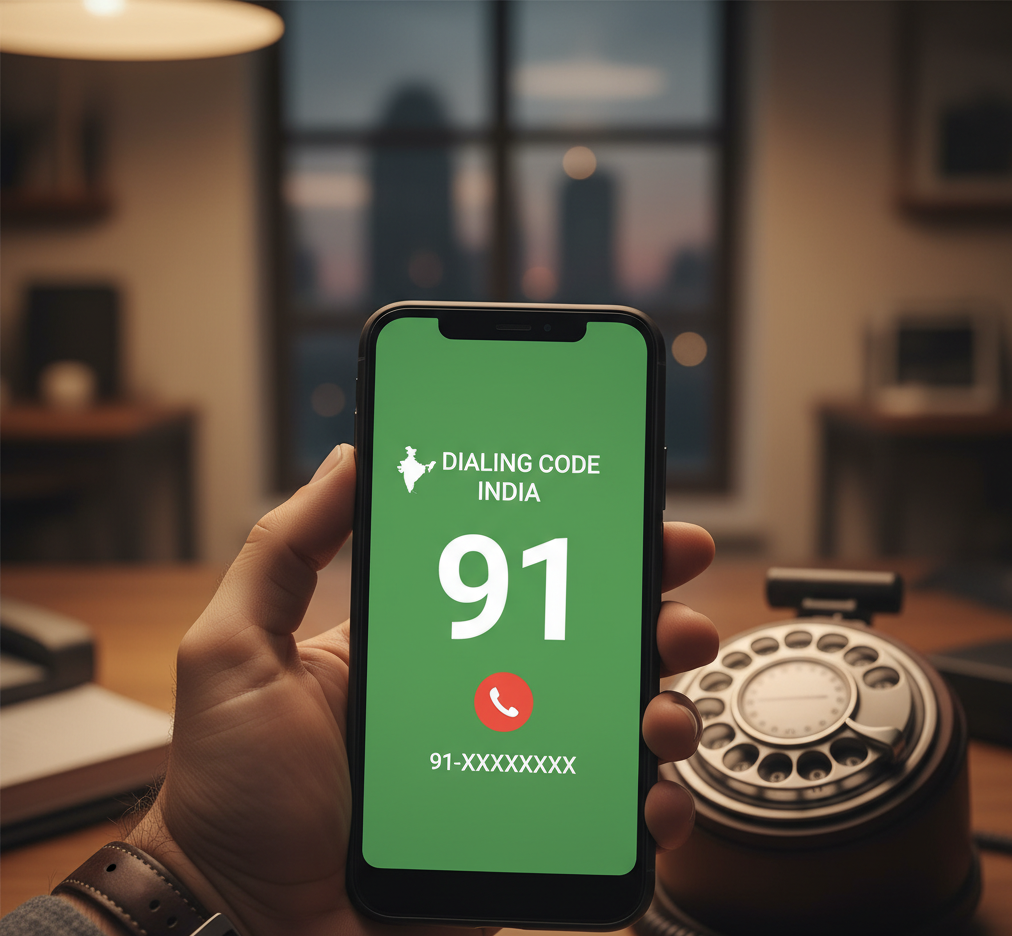Connecting with friends, family, or business associates in a rapidly globalizing world often means navigating the intricacies of international dialing. For Americans looking to place a call to India, understanding the 91 dialing code is the essential first step. This guide breaks down what the code means, how to use it, and provides important context for placing a successful international call from the United States.
What is the 91 Dialing Code?
The 91 dialing code is the designated Country Calling Code for India, assigned by the International Telecommunication Union (ITU). Every country has a unique code that must be dialed before the local phone number to signal to the international telephone network where the call is destined.
For anyone in the United States, or anywhere outside of India, the “91” in a phone number indicates that the call is heading to the Republic of India. This two-digit prefix is a vital piece of the global telecommunications infrastructure, ensuring that your call reaches its intended recipient thousands of miles away.
How to Use the 91 Dialing Code to Call India from the U.S.
Making an international call from the U.S. requires a specific sequence of numbers. You can’t just dial the 91 dialing code and the local number; you must first exit the U.S. telephone network.
The Complete U.S. to India Dialing Sequence
To successfully call a number in India from a U.S. phone (either landline or mobile), you need to follow this formula:
$$\text{US Exit Code} + \text{India Country Code} + \text{Area Code/Mobile Prefix} + \text{Local Number}$$
- Dial the U.S. Exit Code: This is 011. The exit code tells your U.S. phone service that you are placing an international call.
- Dial the India Country Code: This is the crucial step—enter the 91 dialing code.
- Dial the Area Code/Mobile Prefix: Indian phone numbers include an area code (for landlines) or a mobile-specific prefix. The total number of digits following the 91 dialing code is typically 10 digits for both mobile and landline numbers (excluding the initial ‘0’ prefix used when calling domestically within India).
- Dial the Local Number: Enter the remaining digits of the phone number.
In summary, the full sequence looks like:
$$\mathbf{011} + \mathbf{91} + \text{XX} + \text{XXXXXXXX}$$
For example, if the 10-digit Indian phone number (including its local area/mobile code) is 1234567890, you would dial:
011 91 1234567890
Using the Plus Sign ($+$) on Mobile Phones
A more convenient method for most American mobile users is to replace the 011 U.S. exit code with the plus symbol ($+$). This symbol automatically acts as the correct international exit code for the device’s current location, regardless of where you are in the world.
Mobile Dialing Format:
$$\mathbf{+} + \mathbf{91} + \text{XX} + \text{XXXXXXXX}$$
Using the earlier example, you would dial:
+91 1234567890

ime Zone Considerations for Calling India
Given the significant distance, time zone differences are a major factor when calling India from the U.S. India observes Indian Standard Time (IST), which does not use Daylight Saving Time.
Here is a quick reference for the time difference between various U.S. time zones and India (IST):
| U.S. Time Zone (Standard Time) | Time Difference from IST | U.S. Time Zone (Daylight Saving Time) | Time Difference from IST |
| Eastern Standard Time (EST) | IST is 10.5 hours ahead | Eastern Daylight Time (EDT) | IST is 9.5 hours ahead |
| Central Standard Time (CST) | IST is 11.5 hours ahead | Central Daylight Time (CDT) | IST is 10.5 hours ahead |
| Mountain Standard Time (MST) | IST is 12.5 hours ahead | Mountain Daylight Time (MDT) | IST is 11.5 hours ahead |
| Pacific Standard Time (PST) | IST is 13.5 hours ahead | Pacific Daylight Time (PDT) | IST is 12.5 hours ahead |
A good rule of thumb is to calculate what time it will be in India before you dial, ensuring you’re not calling in the middle of the night! For example, if it’s 9:00 AM on the East Coast of the U.S. (EDT), it’s already 6:30 PM in India.
Exploring Cost-Effective Calling Options
Historically, placing international calls was an expensive proposition. Today, numerous cost-effective options are available for U.S. customers calling numbers with the 91 dialing code.
- Mobile Carrier Plans: Most major U.S. carriers (like Verizon, AT&T, and T-Mobile) offer international calling add-ons or plans. These often provide a set number of minutes or unlimited calling to specific countries, including India, for a flat monthly fee. Check with your provider for specific rates and packages.
- VoIP and Internet Apps: Services like Google Voice, Skype, and WhatsApp have revolutionized international communication. Many offer free voice and video calls to other users on the same platform, and some provide very low per-minute rates for calling mobile and landline numbers in India.
- International Calling Cards: While less common, calling cards still exist and can offer prepaid minutes at discounted rates. Be sure to check for hidden fees or expiration dates.
conclusion
By understanding the correct dialing sequence, being mindful of the time difference, and choosing the right calling plan, communicating with India is more accessible and affordable than ever. The 91 dialing code is your key to unlocking this vital connection.